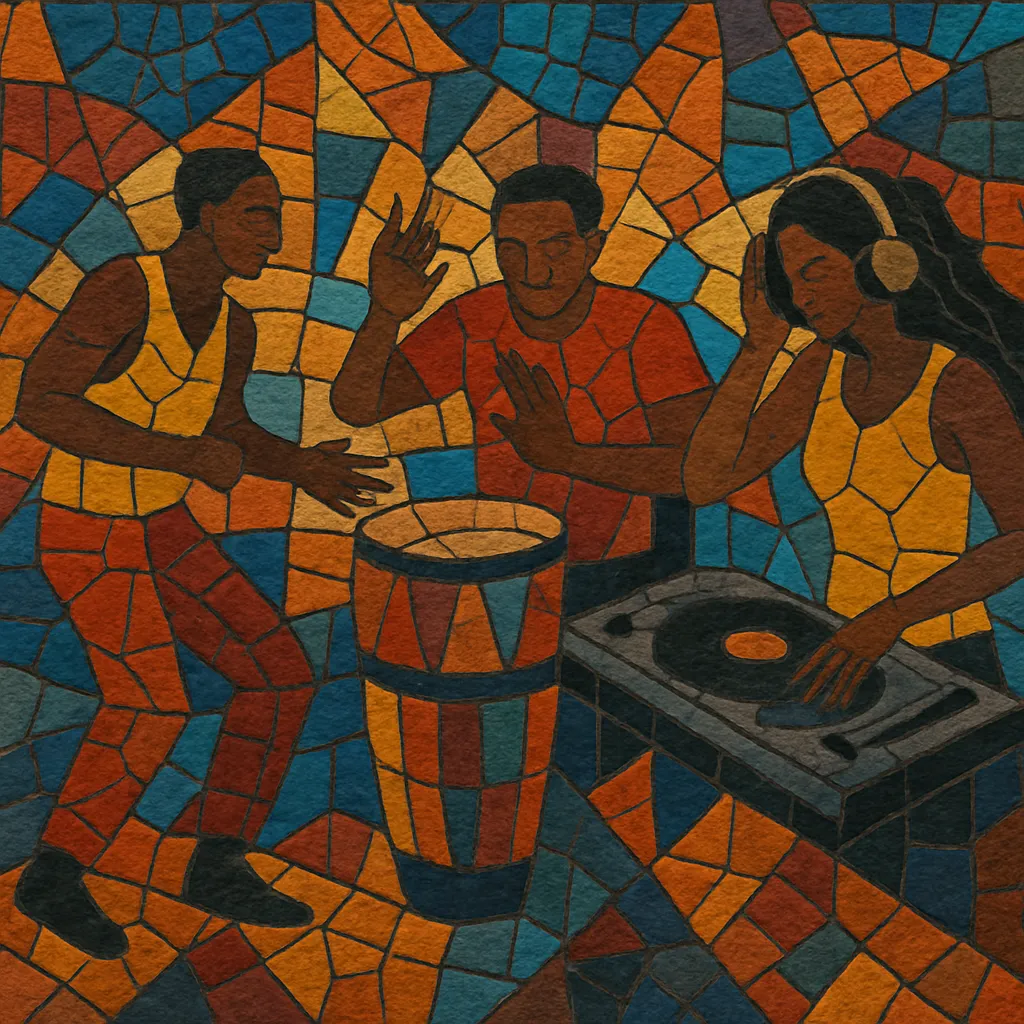Batida is a high-energy club style that emerged from Lisbon’s Afro‑Portuguese diaspora, blending Angolan genres like kuduro and tarraxinha with modern house production and a raw, DIY aesthetic. It is intensely percussive and polyrhythmic, often emphasizing tuned drums, sub‑bass, chopped vocal calls, and hard, syncopated claps.
Typical tempos range from roughly 135 to 150 BPM. Tracks prioritize groove and texture over harmony, using sparse melodic fragments, looped motifs, and dramatic breakdowns to keep dance floors locked into relentless rhythmic cycles. The sound was codified and internationally championed by the Lisbon label Príncipe Discos.
Batida took shape in the peripheries of Lisbon where Angolan and Cape Verdean diasporic communities fused local party sounds with accessible software like FL Studio. Producers adapted Angolan kuduro’s propulsion and tarraxinha’s syncopation, filtering them through house-informed drum programming and a rough, home‑studio approach. Early tracks circulated via CDs, USBs, and local parties before finding wider platforms.
The formation of Príncipe Discos in 2011 provided a dedicated home for the sound. Landmark releases by artists such as DJ Marfox, DJ Nigga Fox, DJ Firmeza, and collectives like Blacksea Não Maya helped crystallize “batida” as a distinct Lisbon identity: minimal melodies, polyrhythmic drum grids, sharp claps, and heavy sub‑bass.
International press, club bookings, and festival stages brought batida to a wider audience. Boiler Room sessions, European tours, and collaborations with experimental electronic communities broadened its reach. The style’s rhythmic language fed into adjacent “global club” currents and inspired producers working in deconstructed club and hard‑drum frameworks.
A new generation of Lisbon‑rooted artists expanded the palette with denser percussion, bolder sound design, and more varied tempos. The scene remains fiercely local yet globally connected, with labels and crews continuing to push batida’s percussive core while exploring hybrid forms with techno, bass music, and experimental club.
Work between 135–150 BPM. Use a driving, dance‑forward pulse with strong syncopation. Emphasize forward momentum through repeating rhythmic cells rather than constant melodic change.
Layer polyrhythms derived from kuduro/tarraxinha (e.g., 3‑3‑2 groupings, off‑grid claps, and swung hats). Build call‑and‑response between kick and tuned percussion. Reserve triplet fills and tom runs to punctuate transitions.
Center the mix on hard, dry kicks; snappy, metallic claps; and tuned percussion (congas, bongos, woodblocks). Use short room or plate reverbs and tight delays for rhythmic reinforcement rather than ambience. Let sub‑bass mirror or interlock with the kick pattern to enhance groove.
Keep harmony minimal—often single‑note riffs, brief pentatonic or minor cells, or percussive stabs. Melodic content should support rhythm, not dominate it. Employ sparse vocal chops (Portuguese or Angolan languages), whistles, or crowd shouts as rhythmic hooks.
Think in 16–32 bar sections. Start with a percussive skeleton, add sub and key rhythmic layers, then strip back for breakdowns that spotlight a single element before slamming back into the full groove. Design DJ‑friendly intros/outros with clear cue points.
Prioritize transients and midrange punch. Use selective sidechain to keep the kick and sub clean. Allow light saturation or clipping on drums for grit. Keep arrangements lean to preserve dance‑floor impact.


